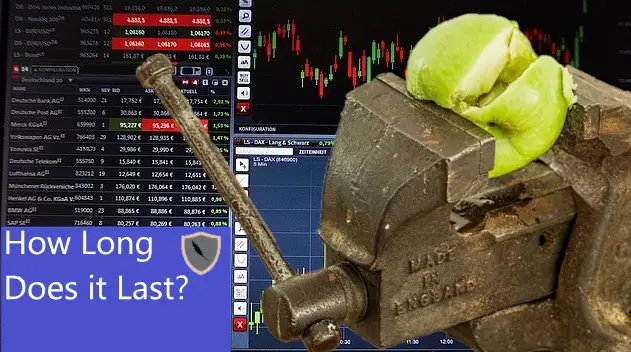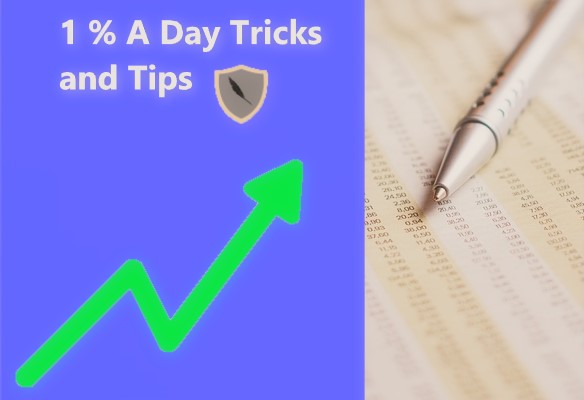Everyone knows that a stock’s price can fluctuate pretty heavily depending on the volume and float of the underlying asset. However very few people actually know what happens when a stock’s price falls to zero.
When a stock’s price falls to zero the price of an individual share is zero. Oftentimes when this happens the company will have to artificially inflate the price to a set standard to remain on an exchange. If they don’t raise their price from zero to the set standard then chances are the stock will be taken off the exchange.
This article is going to go over in depth what happens when a publicly traded company’s stock falls to zero. Further, I will go over the process of being delisted from an exchange. Finally, If your stock’s price is already zero dollars and delisted I will show you what your options are to salvage your investment.
Here at Chronohistoria I teach people how to generate above normal market returns in the stock market (alpha). I routinely publish articles that go over stock research, investment methodologies, my observations on the current market, and finally the tips and tricks of the trade. Feel free to sign up for the free newsletter to remain up to date.
What Exactly Happens When A Company’s Stock Price Falls to Zero?
The obvious answer here is that the overall price of the stock will be zero. If you buy or sell the shares then chances are you will lose all of your investment.
Stock’s with a share price of zero dollars often are worthless for two reasons. First, the market believes that the company is worthless. This is often not the case as the company itself is physically worth more. It’s just that the market perceives the share price as being worthless.
Second, and more importantly, when a stock’s price falls to zero there will be no liquidity available for traders or investors to open or close positions. This means that even if you wanted to sell the stock you won’t be able to as there will be no buyers or sellers in the market.
This is because of the law of supply and demand. If the stock had any sort of demand the price would be above zero. Since the price is at zero that means that there is no demand, and as such no supply to meet it.
Simply put, if a company’s stock falls to zero it will be totally worthless. You will not be able to close or open a position as there will be nobody who wants to buy or sell. Further, if you hold a position of any kind you will lose all of your investment.
The next step is to have a company taken off an exchange, or become delisted.
Stock’s Price of Zero Leading To Delisting.
Becoming a publicly traded company is a big step in the life span of a company. Once a company pulls that trigger they will have to commit to remaining in compliance with an exchange over the lifetime of their company. If they fail to, they will become delisted from the exchange.
For companies who see their stock price fall to zero on the NASDAQ, the major U.S exchange, they will receive a notice of delisting. In order for the company to not have their shares removed from the market they will have to raise their share value above $1.00. (Source for $1.00 compliance on NASDAQ)
For a company whose stock price is zero this is incredibly hard. The company will have to convince the market that their stock’s price is worth more than $1.00. This is often where you see small companies announcing new products, positive upcoming results, or reverse splits to forcibly push their stock above the $1.00 set minimum.
While this might work for a bit often nothing has changed. As such the company’s stock price will come plummeting back down to zero. If the company can’t keep their price above $1.00 then they will be delisted from the exchange.
When that happens the investors who bought the shares cant sell them. They are still shareholders but they can’t sell their shares back to the public easily.
Let’s look at what an investor/trader can do to salvage their investment if they find themselves in this position.
How To Salvage Your Investment If Your Stock’s Price is Zero and Delisted
First, this might actually be a good thing to have your investment delisted. If the company is not traded on any other exchange congratulations you are now a part owner of a private company.
Private companies don’t have to remain in compliance with public entities. For the NASDAQ this means submitting extremely costly reports that cost in the range of $25,000-$250,000 each. This is excess cash that the company can put towards other investments. (Source)
If you want to sell your shares while the company is not publicly listed you are going to have to find a buyer outside of the market. The first buyer would most likely be the company. The next step would be investment firms such as private equity.
Once you have found a buyer for your shares you should reach out to your broker who will begin the process to transfer the shares from your account and the cash from theirs. This process takes some time so you will have to be patient.
I have personally had a couple stocks become delisted over time. Some of them have become relisted at a much higher rate which has allowed me to sell for a profit. However a lot of them have closed their doors and as such I lost my entire investment.
Conclusion
There you have it, the article on what happens when a stock’s price falls to zero. It’s actually a pretty common sight in the stock market among the penny stocks. If a company can’t raise their stock price above a certain threshold then chances are they will become delisted from an exchange.
If this happens to you then chances are you have lost your entire investment as it’s really hard for a delisted company to regain compliance. However you still hold your shares and can sell them to a buyer by setting everything up and contacting your broker.
Here at Chronohistoria I teach people how to generate above normal market returns (alpha). I publish articles on stock research, investment methodologies, and tips/tricks of the trade. Feel free to sign up for the free newsletter to remain up to date on everything.
Further you can check out some of the other articles below.
-
How Long Does a Short Squeeze Last? (3 Answers)

What is the time frame for you short squeeze? Well here is everything you will ever need to know to determine how long it will last.
-
Why You Still Own a Stock After It’s Delisted and How to Sell It

Do you still own a stock after its delisted? How do you sell it? Don’t worry the stock is still worth money and here is how to sell.
-
Can You Make 1% A Day in the Stock Market? (3 Steps)

Making 1% a day in the stock market is hard but defiantly doable. Here are 3 simple steps to helping you achieve this return.
Until next time, best of luck on your investment journey.
Sincerely,



